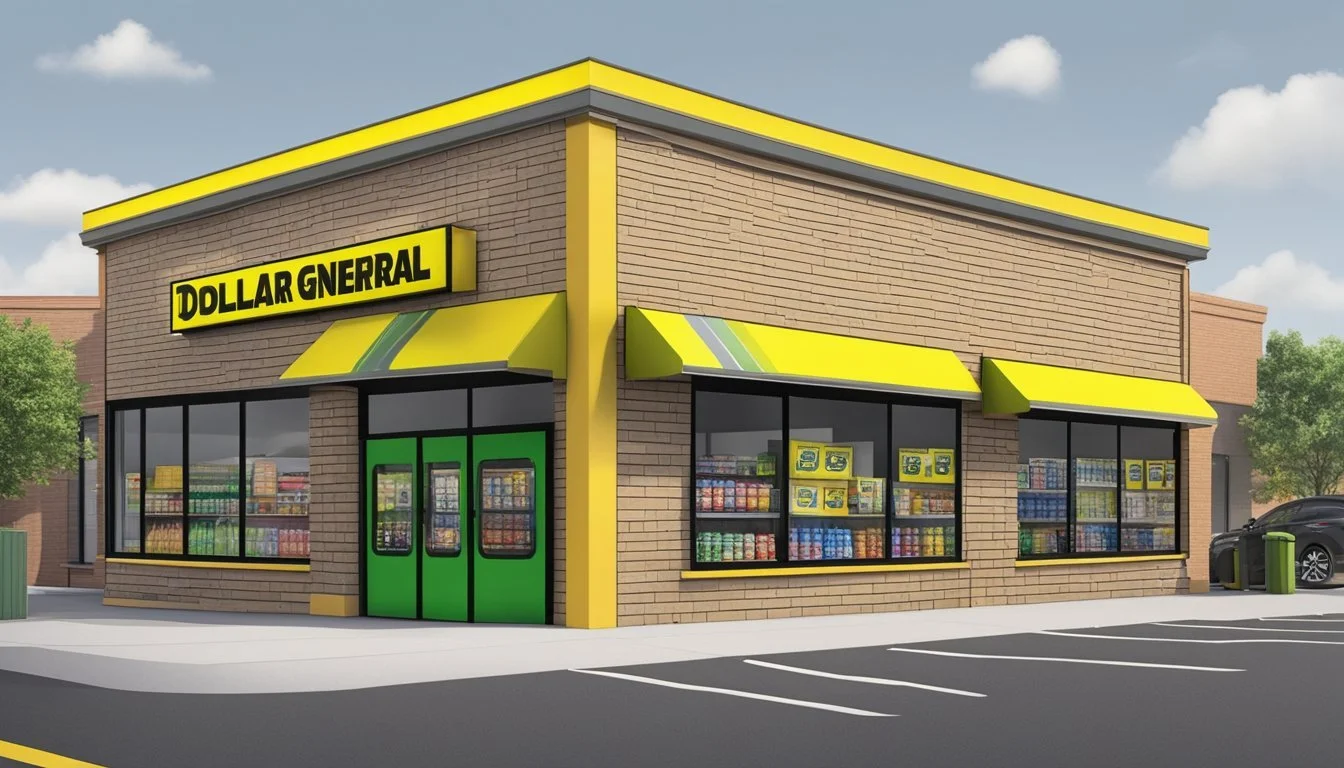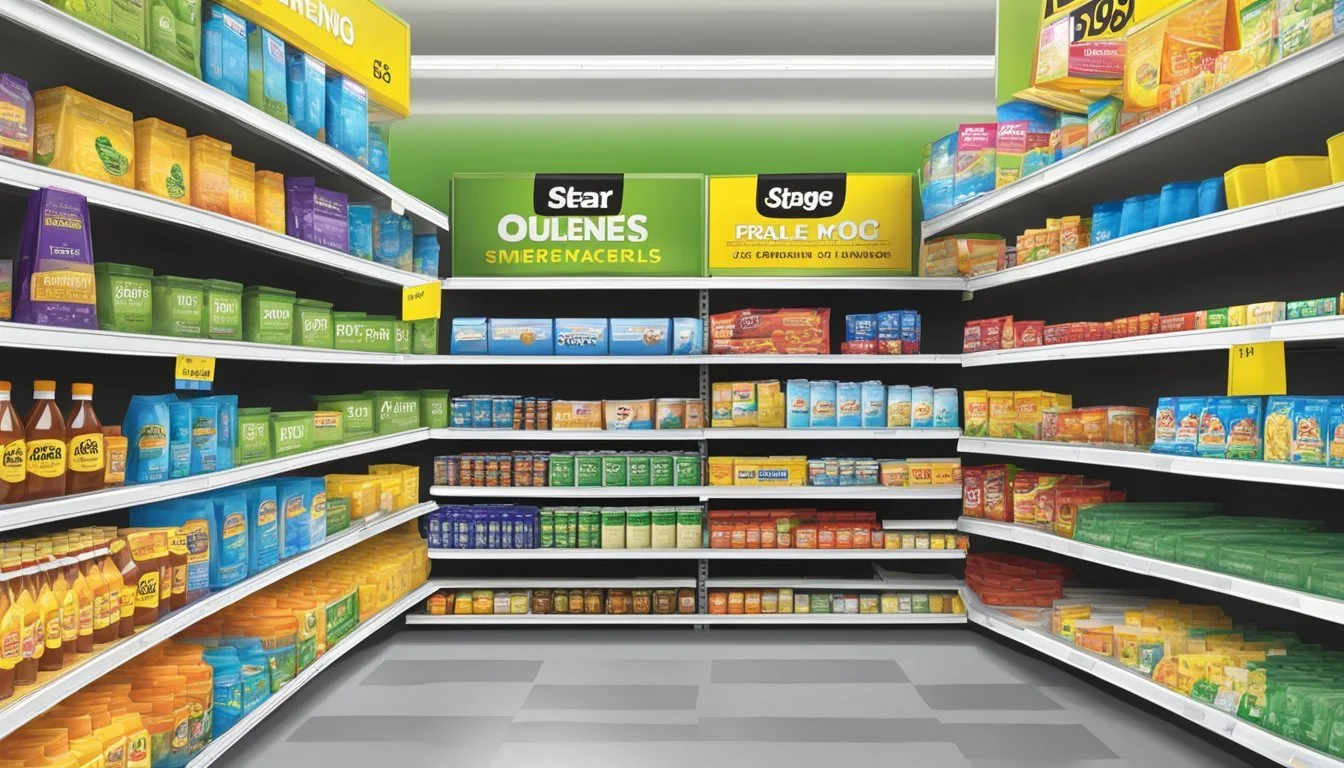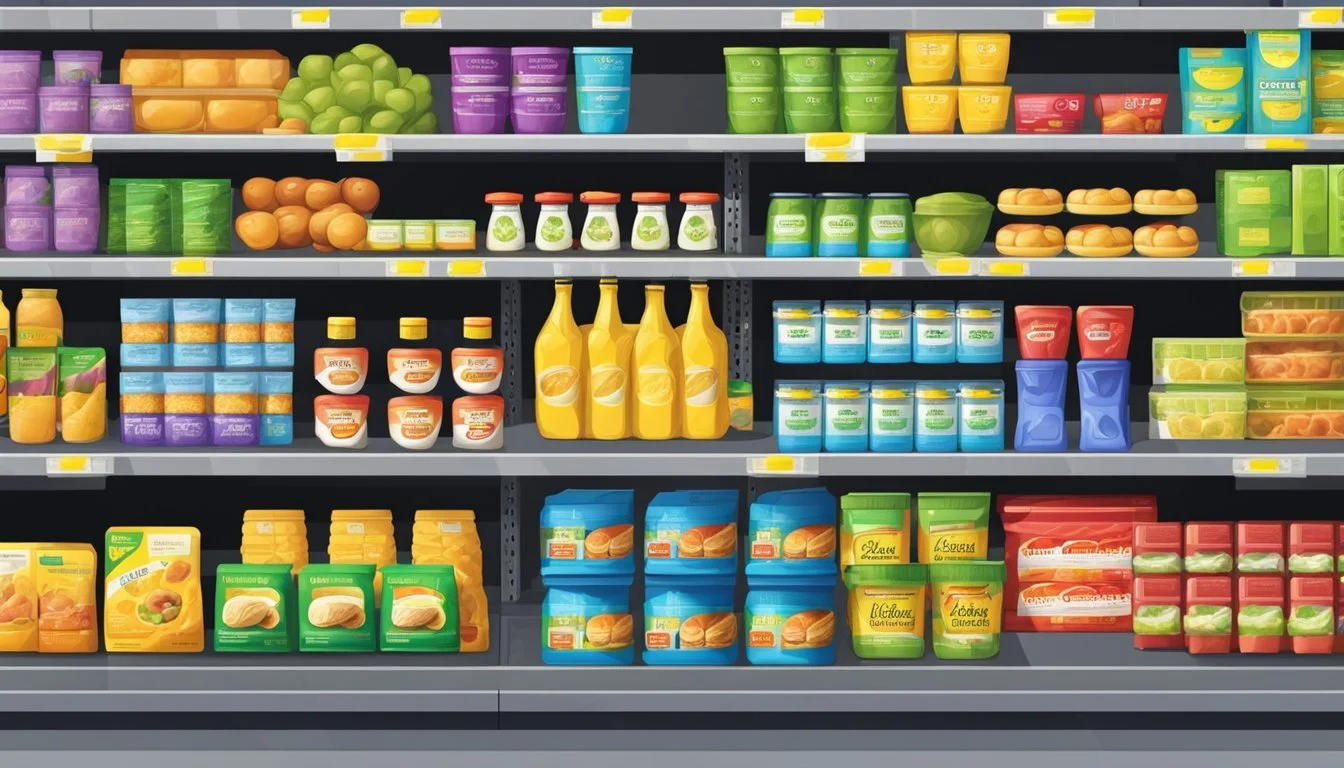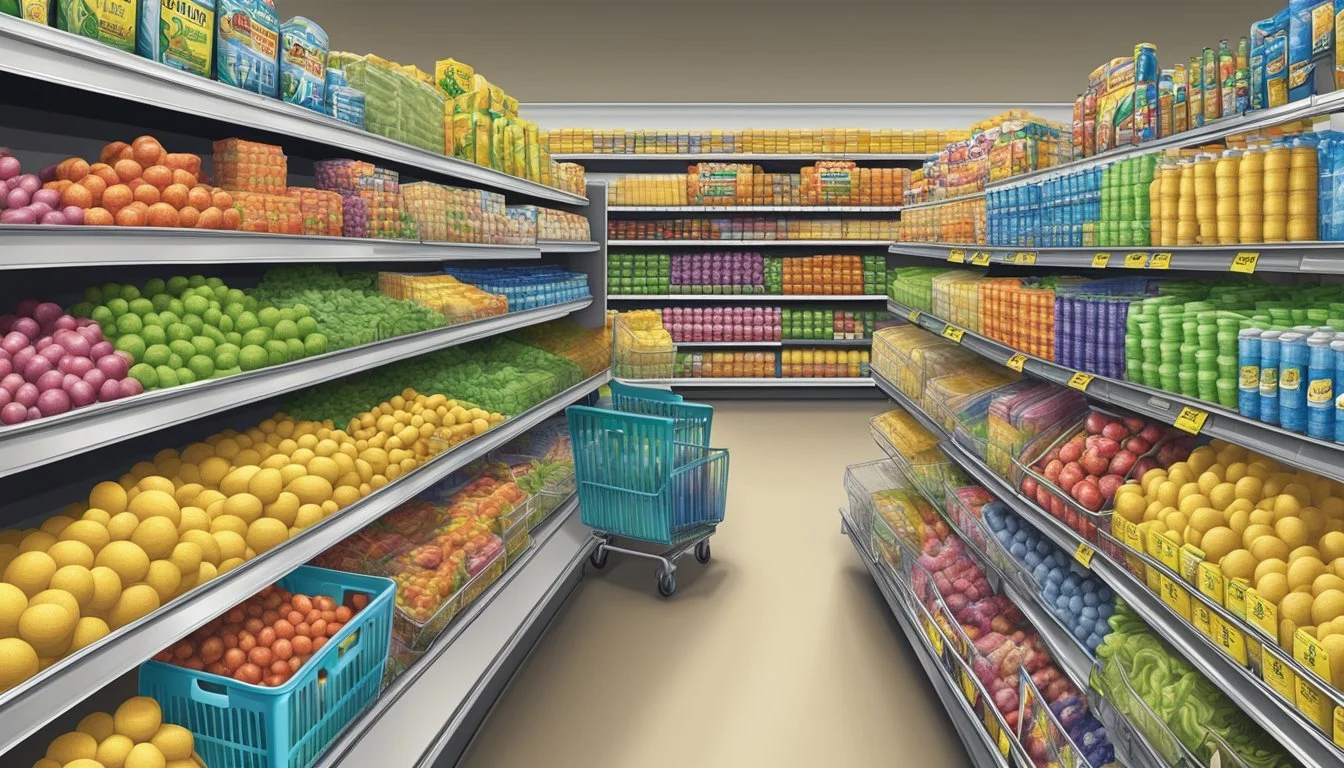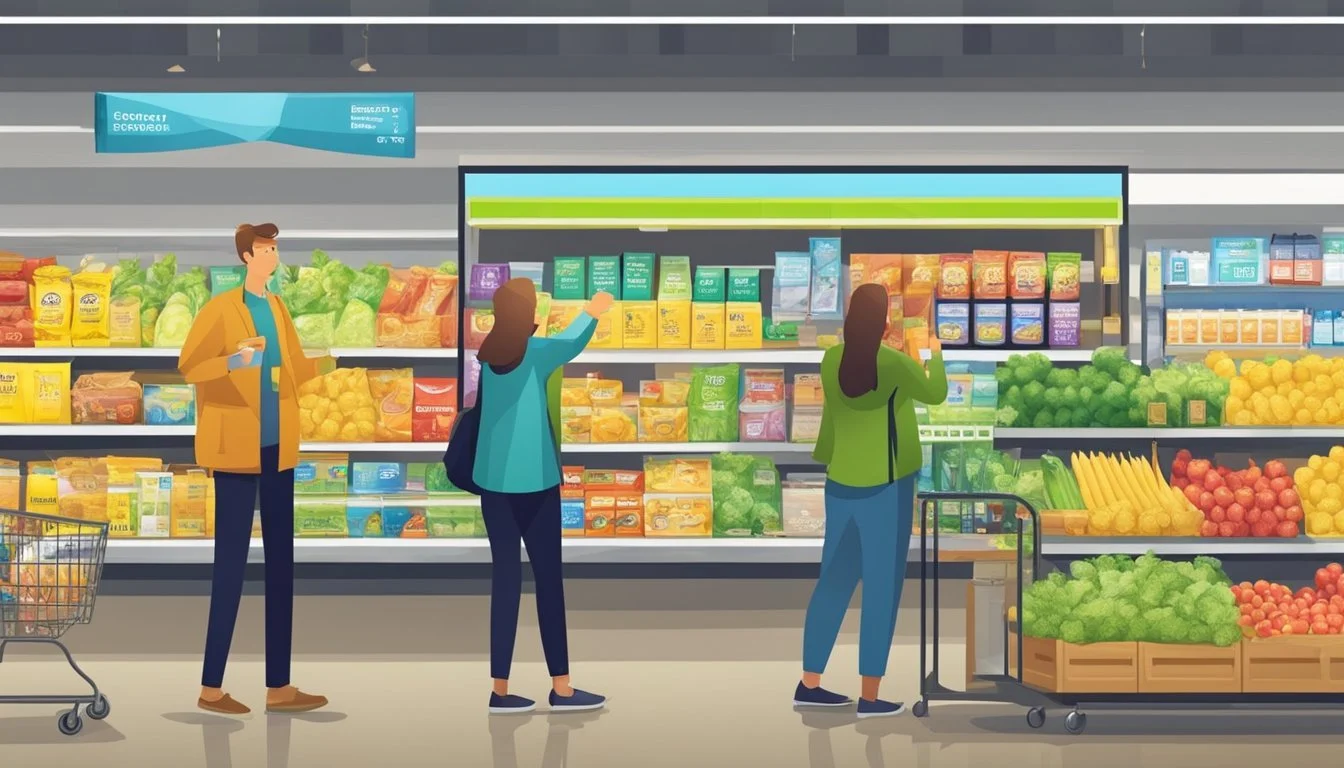Is Dollar General Cheaper Than Lucky Supermarkets?
A price comparison analysis
When it comes to finding the best deals on groceries and household items, consumers often compare prices between different retailers. Dollar General and Lucky Supermarkets are two popular options that many shoppers consider. A direct price comparison between Dollar General and Lucky Supermarkets shows that Dollar General tends to offer lower prices on many items.
Dollar General has gained popularity as a discount retailer, with a focus on providing everyday low prices on a wide range of products. The chain has expanded rapidly across the United States, attracting budget-conscious shoppers. Lucky Supermarkets, on the other hand, is a regional supermarket chain known for its fresh produce and competitive pricing.
While Lucky Supermarkets may offer better deals on certain fresh foods and produce, Dollar General often beats them on prices for packaged goods, household items, and personal care products. The difference in pricing strategies and store formats contributes to these variations. Shoppers looking to maximize their savings may find it beneficial to split their purchases between the two retailers, depending on the specific items they need.
Understanding Pricing Strategies
Dollar General and Lucky Supermarkets employ different pricing strategies to attract customers and maintain profitability. These approaches reflect their distinct business models and target markets.
Discount Retail Model of Dollar General
Dollar General focuses on offering low prices through a no-frills shopping experience. The company keeps costs down by operating smaller stores with limited staff and a curated product selection. This allows them to sell items at 20% to 40% less than full-price retailers.
Dollar General uses a strategy of selling products in smaller quantities to maintain lower price points. Many items are priced under $10, appealing to budget-conscious shoppers. The store also leverages bulk purchasing power to negotiate better deals with suppliers.
Pricing Policies of Lucky Supermarkets
Lucky Supermarkets typically follows a more traditional grocery store pricing model. They offer a wider range of products and brands compared to Dollar General. Lucky's pricing strategy often includes:
Regular promotional sales and discounts
Loyalty programs that provide additional savings
Competitive pricing on staple items to attract customers
Lucky may use loss leader pricing on certain products to drive foot traffic. They balance these discounts with higher margins on other items. The store's larger format allows for a greater variety of products, potentially offering better value on bulk purchases.
Unlike Dollar General, Lucky Supermarkets generally sell full-sized products rather than smaller quantities. This can result in higher per-item prices but potentially better value per unit.
Comparative Analysis of Product Categories
Dollar General and Lucky Supermarkets offer distinct shopping experiences with varying product selections and pricing strategies. Their differences become apparent when examining specific product categories.
Fresh Produce and Meat
Dollar General's fresh produce selection is limited, typically consisting of basic fruits and vegetables. The quality can be inconsistent, and organic options are rare. Meat offerings are mostly frozen or processed.
Lucky Supermarkets provides a wider range of fresh produce, including organic options. Their meat department offers more variety, with fresh cuts and a butcher counter in many locations.
Price-wise, Dollar General may have lower costs on some items, but Lucky Supermarkets often provides better value considering quality and selection.
Pantry Staples and Cereal
Dollar General excels in pantry staples, offering competitive prices on canned goods, pasta, and rice. Their cereal selection focuses on popular brands at discounted rates.
Lucky Supermarkets carries a broader range of pantry items, including more premium and organic options. Their cereal aisle typically features a larger variety of brands and sizes.
For common items, Dollar General often has lower prices. However, Lucky Supermarkets may offer better deals through sales and loyalty programs.
Household Essentials and Cleaning Supplies
Dollar General provides a solid selection of household essentials and cleaning supplies at budget-friendly prices. Their private label options can offer significant savings.
Lucky Supermarkets generally stocks a wider range of brands and specialized cleaning products. They may have more eco-friendly options available.
Price comparisons in this category often favor Dollar General for basic items. Lucky Supermarkets may be more competitive for specialized or premium products.
Store Brands vs. National Brands
Store brands offer significant savings compared to national brands while often matching quality. Private labels allow retailers to provide lower-priced alternatives across product categories.
Dollar General's Private Labels
Dollar General offers a wide range of private label products under brands like Clover Valley, Smart & Simple, and DG Home. These store brands cover staples like canned goods, snacks, cleaning supplies, and household items. Clover Valley foods typically cost 20-30% less than national brand equivalents.
DG's private labels aim to provide good value on everyday essentials. The company focuses on offering generic staples at rock-bottom prices. While quality can vary, many Dollar General store brands receive positive customer reviews for taste and performance.
Lucky Supermarkets Brand Selection
Lucky Supermarkets carries both national brands and its own private labels. The retailer's store brands include Signature Select foods, O Organics, and Lucerne dairy products. These private labels span most grocery categories from produce to packaged goods.
Lucky's store brands often cost 10-25% less than comparable name brands. The chain emphasizes quality in its private label offerings, particularly for fresh produce and organic items. O Organics provides USDA certified organic options at lower price points than national organic brands.
Lucky also stocks a variety of regional and specialty private labels to cater to diverse customer preferences. This allows shoppers to find high-quality alternatives to pricier national brands across product types.
Cost Analysis
Dollar General and Lucky Supermarkets offer distinct pricing strategies that impact shoppers' wallets. Comparing their costs reveals key differences in how each retailer approaches value.
Average Prices and Daily Deals
Dollar General aims to keep prices consistently low across its inventory. Many items are priced at $1 or less, with most products under $10. This budget-friendly approach attracts cost-conscious consumers.
Lucky Supermarkets tends to have higher everyday prices but compensates with frequent sales and promotions. Their circular ads feature weekly specials on produce, meat, and pantry staples.
Dollar General rarely offers deep discounts or loyalty programs. Lucky Supermarkets provides digital coupons and a rewards card for additional savings.
For a typical grocery basket, Dollar General often comes out 20-40% cheaper than full-price retailers like Lucky Supermarkets.
Bulk-Buy Savings and Benefits
Lucky Supermarkets offers more bulk-buying options, especially in produce and dry goods departments. This can lead to significant savings for large families or those who stock up.
Dollar General's limited store footprint restricts bulk offerings. However, they do provide some multi-packs and larger sizes at competitive prices.
Bulk purchases at Lucky Supermarkets may require a larger upfront cost but can result in a lower per-unit price. Dollar General focuses on smaller package sizes to maintain low shelf prices.
For shoppers able to buy in quantity, Lucky Supermarkets may offer better long-term value. Those seeking immediate savings on smaller quantities often find better deals at Dollar General.
Impact of Sales Frequency on Overall Savings
Sales events and promotional discounts significantly influence potential savings at Dollar General and Lucky Supermarkets. The frequency and extent of these offers can make a substantial difference in shoppers' overall expenses.
Sales Events at Dollar General
Dollar General runs regular sales events throughout the year. These often feature discounts on specific product categories or brands. Shoppers can find deals on household essentials, groceries, and seasonal items.
Dollar General's digital coupons offer additional savings. Customers can load these to their accounts for use at checkout. The store also provides a weekly ad with current specials.
Smart shoppers track these sales patterns. They stock up on items when prices drop. This strategy maximizes savings over time.
Promotional Discounts at Lucky Supermarkets
Lucky Supermarkets offers various promotional discounts to attract customers. They frequently run buy-one-get-one-free deals on popular items. The store also features weekly specials on produce, meat, and dairy products.
Lucky's loyalty program provides personalized offers based on shopping history. Members earn points on purchases, redeemable for future discounts.
Combining these promotions with manufacturer coupons can lead to significant savings. Savvy customers use spreadsheets to track prices and plan their shopping trips accordingly.
Both stores offer opportunities for savings through sales events. The key lies in strategic shopping and taking advantage of each store's unique promotional calendar.
Economic Factors Influencing Prices
Inflation and supply chain dynamics play crucial roles in shaping retail prices. These factors impact both Dollar General and Lucky Supermarkets, affecting their pricing strategies and overall costs.
Effects of Inflation on Grocery Retail
Inflation directly influences consumer goods prices. As the cost of living rises, retailers often adjust their pricing to maintain profit margins. Dollar General has historically managed to keep prices low despite inflationary pressures.
In 2020, Dollar General reported increased net sales and operating profits, even while opening new stores. This success suggests effective cost management strategies.
Consumer Reports indicates that shoppers are increasingly price-conscious due to inflation. Many Americans are changing their buying habits, seeking deals and making substitutions to cope with rising food costs.
Supply Chain and Its Role in Pricing
Supply chain efficiency significantly impacts retail prices. Dollar General's extensive network of stores - with 75% of the U.S. population living within 5 miles of a location - allows for streamlined distribution.
This proximity to consumers potentially reduces transportation costs, enabling Dollar General to offer competitive prices. The company's expansion plans further indicate confidence in their supply chain model.
Market basket comparisons between Dollar General and traditional supermarkets like Lucky often show lower prices at dollar stores. However, product selection and quality may differ, influencing the overall value proposition for consumers.
Shopping Experience Comparison
Dollar General and Lucky Supermarkets offer distinct shopping experiences. The layout, customer service, and checkout processes differ significantly between the two retailers.
Store Layout and Navigation
Dollar General stores typically feature a compact, no-frills layout. Aisles are narrow and packed with a variety of items, from groceries to household goods. Signage is minimal, which can make finding specific products challenging for first-time shoppers.
Lucky Supermarkets, in contrast, have a more spacious layout. Departments are clearly marked, and wide aisles allow for easier navigation. Fresh produce, meat, and bakery sections are prominent features.
Dollar General's smaller footprint means a quicker shopping trip for those with a short list. Lucky Supermarkets cater to larger shopping trips and offer a more extensive selection in most categories.
Customer Service and Checkout Process
Dollar General often operates with a lean staff. Self-checkout options are rare, and lines can form during peak hours. Cashiers are trained to work efficiently, prioritizing speed over personalized service.
Lucky Supermarkets generally provide more staff throughout the store. Dedicated customer service counters are common, offering assistance with special requests or returns.
Checkout at Lucky Supermarkets often includes both staffed lanes and self-checkout options. This variety can lead to shorter wait times during busy periods.
Dollar General's streamlined approach suits shoppers seeking quick transactions. Lucky Supermarkets' service model caters to those who may need more assistance or prefer a traditional supermarket experience.
Alternatives to Traditional Supermarkets
Consumers have more options than ever for purchasing groceries beyond conventional supermarkets. These alternatives offer unique benefits in terms of pricing, convenience, and selection.
Warehouse Clubs and Their Offers
Costco leads the warehouse club segment, providing bulk quantities at discounted prices. Members gain access to a wide range of products, from groceries to electronics. Costco's Kirkland Signature brand offers quality items at competitive rates.
Sam's Club, owned by Walmart, follows a similar model. Both chains feature rotating inventory and limited-time deals. This encourages frequent visits and impulse purchases.
BJ's Wholesale Club rounds out the major warehouse retailers. These clubs often beat traditional grocery prices on staples like milk, eggs, and meat.
Membership fees offset slim profit margins. Annual costs range from $45 to $120 for basic memberships. Premium tiers unlock additional perks like cash back rewards.
Online Retailers and Grocery Delivery Options
Amazon revolutionized online grocery shopping with its acquisition of Whole Foods. Prime members enjoy free delivery on orders over $35. Amazon Fresh provides same-day delivery in select areas.
Walmart leverages its vast store network for online grocery. Customers can choose between pickup and delivery. The retailer's size allows for competitive pricing.
Instacart partners with local stores to offer same-day delivery. Users can compare prices across multiple retailers in one app. The service charges delivery fees and marks up some items.
Target's Shipt subsidiary provides same-day delivery from Target and other partner stores. A $99 annual membership unlocks free delivery on orders over $35.
Many regional chains now offer their own delivery services. This helps them compete with online giants and preserve customer loyalty.
Consumer Preferences and Trends
Consumer shopping habits are evolving rapidly, influenced by health concerns and the desire for convenience. These shifts are impacting where and how people choose to shop for groceries and household items.
Health-Conscious Shopping Decisions
More consumers are prioritizing health and wellness in their purchasing decisions. This trend has led to increased demand for organic, natural, and locally-sourced products. Many shoppers are reading labels carefully, seeking out items with fewer additives and preservatives.
Dollar General has responded by expanding its selection of healthier options. The chain now offers more fresh produce and nutritious snacks in many locations. However, Lucky Supermarkets typically provides a wider range of health-focused products and specialty diet items.
Health-conscious consumers often compare nutritional information using smartphone apps while shopping. This practice is more common in metro areas where tech-savvy shoppers are concentrated.
Demand for Convenience and Multi-Channel Shopping
Modern shoppers value convenience highly. They seek out stores with user-friendly layouts and quick checkout processes. Many prefer retailers that offer multiple ways to shop, including in-store, online, and mobile options.
Dollar General has invested in improving its app and e-commerce capabilities. The company's small-format stores are designed for fast, easy shopping trips. Lucky Supermarkets often provides more services like in-store pharmacies and prepared food sections.
Bargain hunters use price comparison apps to find the best deals across different retailers. Some consumers listen to podcasts like Consumerpedia for shopping tips and product reviews.
Both chains are adapting to meet changing consumer needs. They're updating store layouts, expanding product lines, and enhancing digital offerings to stay competitive in the evolving retail landscape.

